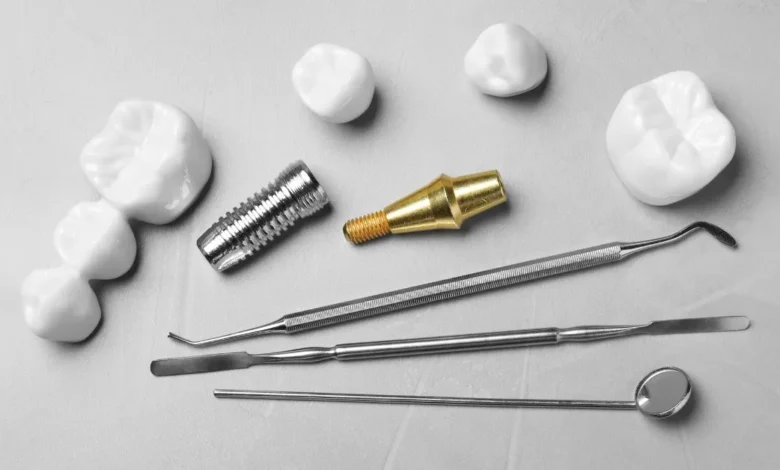What Is Anti Rotational Castable Abutment Narrow Platform?

Dental professionals continually seek advancements that improve patient outcomes, streamline procedures, and enhance overall treatment effectiveness. One such advancement is the introduction of the anti-rotational castable abutment narrow platform. But what exactly is it, and how does it benefit dental treatments? Let’s delve into the specifics.
Contents
- 1 The function of a Castable Abutment
- 2 What is an Anti-Rotational Feature?
- 3 Benefits of an Anti-Rotational Castable Abutment
- 4 Narrow Platform vs. Standard Platform Abutments
- 5 Materials Used in Anti-Rotational Castable Abutments
- 6 How Anti-Rotational Castable Abutments are Used in Dentistry?
- 7 Conclusion
The function of a Castable Abutment
A castable abutment serves as a critical component in dental implant systems. It acts as a connector between the dental implant, which is anchored into the jawbone, and the dental prosthesis, such as a crown or bridge. The primary function of a castable abutment is to provide a stable and customizable foundation for the prosthesis.
Castable abutments offer flexibility in designing the final restoration. Dentists and lab technicians can modify the abutment to achieve the desired shape and angulation, ensuring optimal aesthetics and function for the patient. This customization is essential for cases with unique anatomical considerations or aesthetic demands.
What is an Anti-Rotational Feature?
An anti-rotational feature is a design element incorporated into the abutment to prevent rotation. In simpler terms, it ensures that once the abutment is placed onto the implant, it remains securely in position without any rotational movement.
This feature is particularly crucial for maintaining the alignment and stability of the prosthesis. It prevents micro-movements that can lead to prosthetic loosening or failure over time. In essence, the anti-rotational feature locks the abutment into place, ensuring a stable and long-lasting connection.
If you’re interested in exploring more about anti-rotational castable abutments, check out our product page GDT for detailed specifications and ordering information.
Benefits of an Anti-Rotational Castable Abutment
Enhanced Stability and Durability
The primary benefit of an anti-rotational castable abutment is the enhanced stability it provides. By preventing rotational movements, it ensures the prosthesis remains securely attached to the implant, reducing the risk of complications and increasing the longevity of the restoration.
Improved Prosthetic Accuracy
With the abutment firmly locked into place, dentists can achieve greater accuracy in prosthetic placement. This leads to better alignment, improved occlusion, and a more natural appearance for the patient.
Reduced Maintenance and Adjustments
Anti-rotational castable abutments minimize the need for frequent adjustments or repairs. The stable connection reduces the likelihood of prosthetic loosening, saving both the patient and the dentist time and effort in the long run.
Narrow Platform vs. Standard Platform Abutments
Another important aspect to consider is the platform size of the abutment. Traditional or “standard” abutments typically have a wider platform, ranging from 3.5mm to 6.5mm in diameter. On the other hand, narrow platform abutments have a smaller diameter, usually between 2.4mm to 3mm.
Narrow Platform Abutments
Narrow platform abutments are designed for use with narrow implants, typically used in areas with limited bone width or in the anterior region where aesthetics are paramount. These abutments are ideal for patients with smaller teeth or those requiring a more conservative approach to implant placement.
Standard Platform Abutments
Standard platform abutments, on the other hand, are used with standard-width implants and are suitable for a broader range of clinical situations. They provide a robust foundation for larger restorations and are often used in the posterior region where chewing forces are higher.
Comparative Advantages
Narrow platform abutments offer several advantages, including:
- Minimized Bone Resorption: Their smaller diameter allows for more conservative bone preparation, preserving vital bone structures.
- Enhanced Aesthetics: Narrow abutments are less likely to cause gum recession, leading to improved aesthetic outcomes.
- Versatility: They are particularly useful in cases where space is limited, such as in the anterior region or in patients with smaller teeth.
Materials Used in Anti-Rotational Castable Abutments
Anti-rotational castable abutments are typically made from high-quality materials to ensure strength and biocompatibility. Common materials include:
Titanium
Known for its excellent biocompatibility and strength, titanium is a popular choice for castable abutments. It integrates well with bone and provides a durable foundation for prosthetics.
Zirconia
Zirconia abutments offer superior aesthetics due to their tooth-colored appearance. They are ideal for the anterior region where aesthetics are a priority. Additionally, zirconia is highly biocompatible and resistant to wear and corrosion.
Combination Materials
Some abutments may combine materials, such as a titanium base with a zirconia sleeve, to offer the benefits of both strength and aesthetics.
How Anti-Rotational Castable Abutments are Used in Dentistry?
Anti-rotational castable abutments are used in dentistry primarily to enhance the stability and longevity of dental restorations. These abutments are selectively employed in cases requiring custom prosthetics, where precise fit and stability are paramount. The process begins with the dental professional taking an accurate impression of the implant site. The lab technician then uses the castable abutment to create a customized prosthetic, ensuring it matches the individual patient’s anatomical and aesthetic needs.
The anti-rotational feature locks the abutment securely into the implant, preventing any rotational movements that could compromise the prosthesis. This secure attachment not only improves the functional performance of the dental restoration but also minimizes complications such as loosening or misalignment over time. Consequently, patients benefit from a reliable, long-lasting solution that meets both functional and aesthetic requirements.
Conclusion
In conclusion, anti-rotational castable abutments with narrow platforms represent a significant advancement in dental implantology. They offer enhanced stability, improved prosthetic accuracy, and reduced maintenance needs, making them a valuable tool for dentists and oral surgeons. By understanding the function, benefits, and materials of these abutments, dental professionals can provide superior care and outcomes for their patients.


